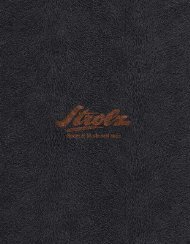Google search engine optimization starter guide
Google search engine optimization starter guide
Google search engine optimization starter guide
You also want an ePaper? Increase the reach of your titles
YUMPU automatically turns print PDFs into web optimized ePapers that Google loves.
18<br />
Optimizing Content<br />
Optimize your use of images<br />
Image-related information can be<br />
provided for by using the "alt" attribute<br />
Images may seem like a straightforward component of your site, but<br />
you can optimize your use of them. All images can have a distinct<br />
filename and "alt" attribute, both of which you should take<br />
advantage of. The "alt" attribute allows you to specify alternative<br />
text for the image if it cannot be displayed for some reason (1).<br />
Why use this attribute? If a user is viewing your site on a browser that<br />
doesn't support images, or is using alternative technologies, such as<br />
a screen reader, the contents of the alt attribute provide<br />
information about the picture.<br />
Another reason is that if you're using an image as a link, the alt text<br />
for that image will be treated similarly to the anchor text of a text link.<br />
However, we don't recommend using too many images for links in<br />
your site's navigation when text links could serve the same purpose.<br />
Lastly, optimizing your image filenames and alt text makes it easier<br />
for image <strong>search</strong> projects like <strong>Google</strong> Image Search to better<br />
understand your images.<br />
Store files in specialized directories and<br />
manage them using common file formats<br />
Instead of having image files spread out in numerous directories and<br />
subdirectories across your domain, consider consolidating your<br />
images into a single directory (e.g. brandonsbaseballcards.com/<br />
images/). This simplifies the path to your images.<br />
Use commonly supported filetypes - Most browsers support JPEG,<br />
GIF, PNG, and BMP image formats. It's also a good idea to have the<br />
extension of your filename match with the filetype.<br />
Glossary<br />
Screen reader<br />
Software for speaking on-screen information or outputting to a Braille display.<br />
(1) Our image wasn't displayed to the user for some reason, but at least the alt text<br />
was.<br />
(root)<br />
images<br />
about<br />
articles<br />
news<br />
006<br />
( ) It is easier to find<br />
the paths to images if<br />
they are stored in one<br />
directory.<br />
ASCII language<br />
Abbreviation for American Standard Code for Information Exchange. A character<br />
encoding centered on the English alphabet.

















